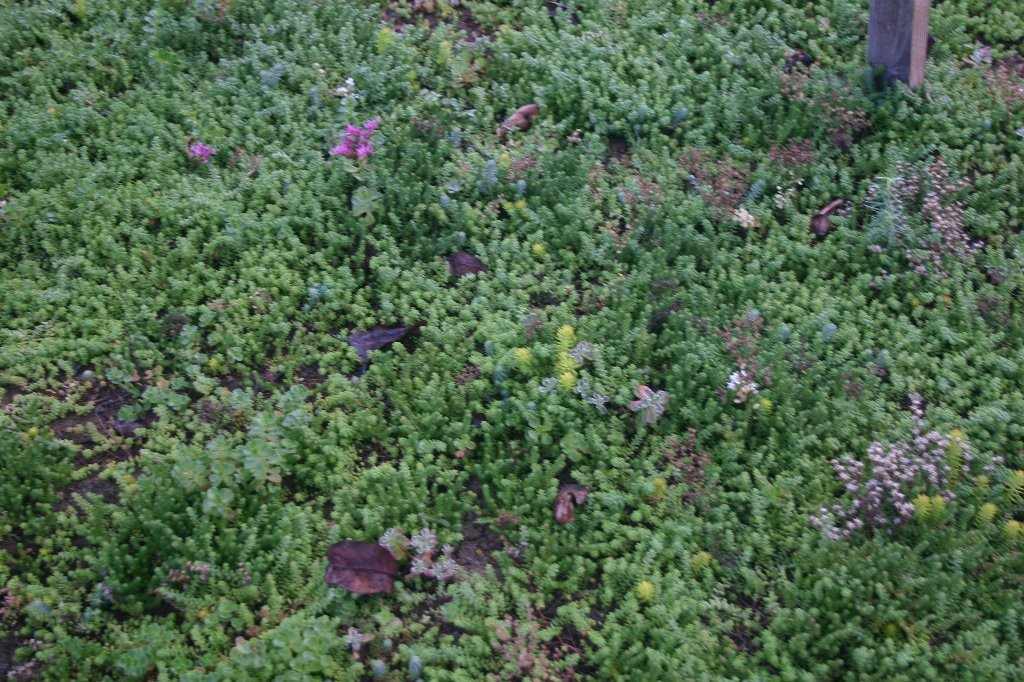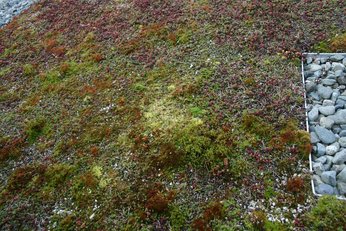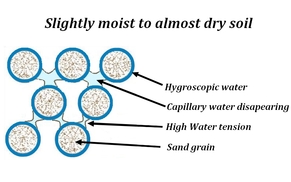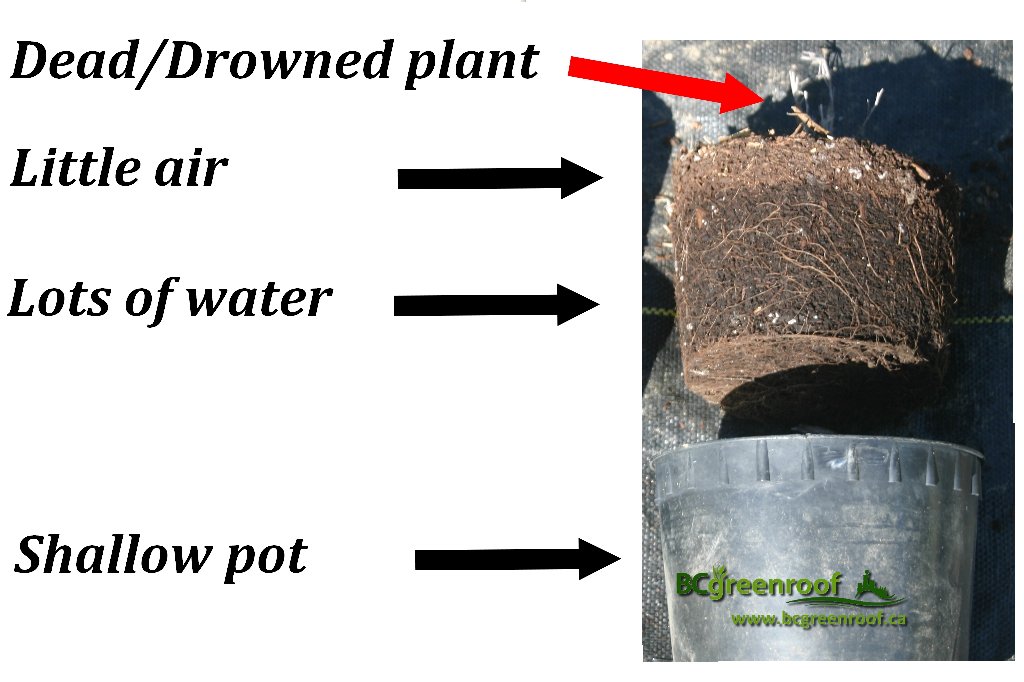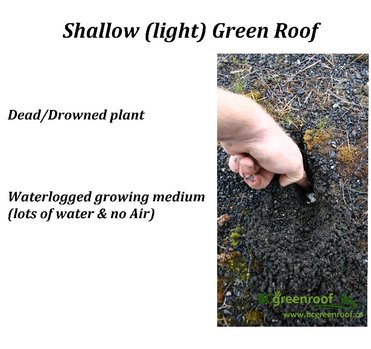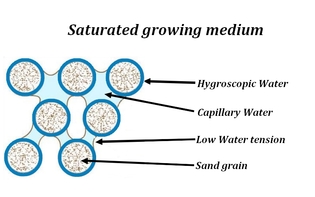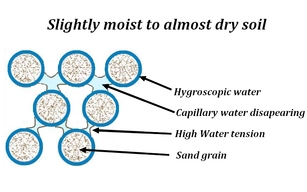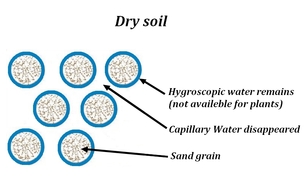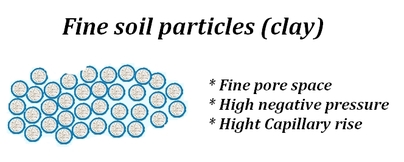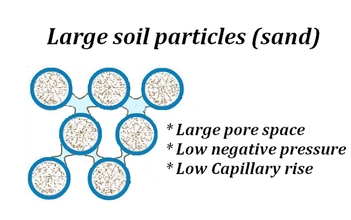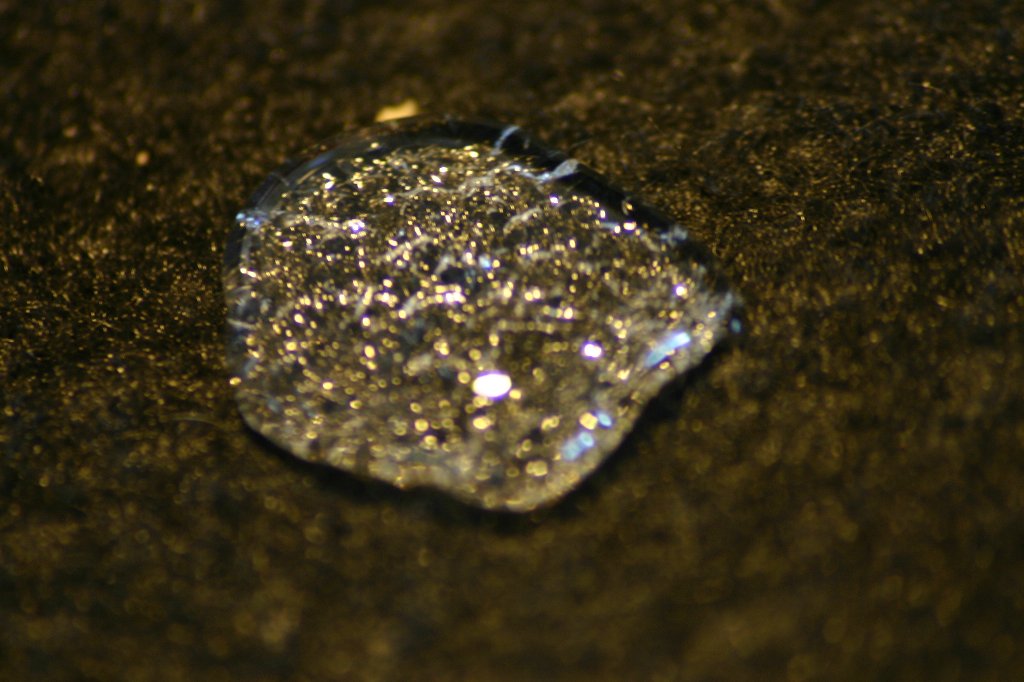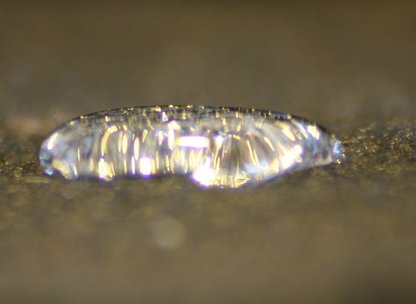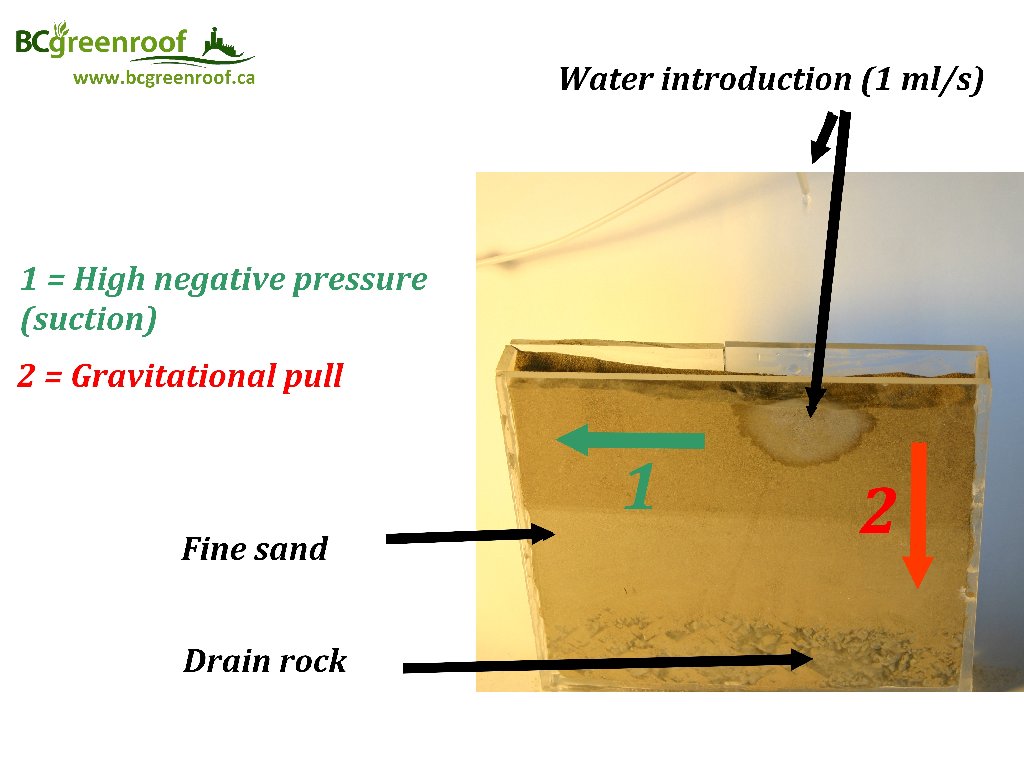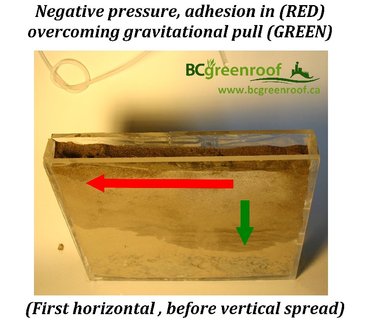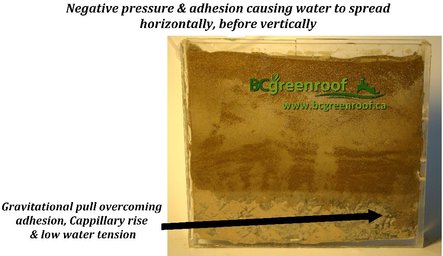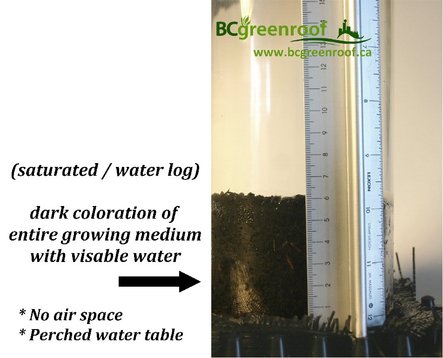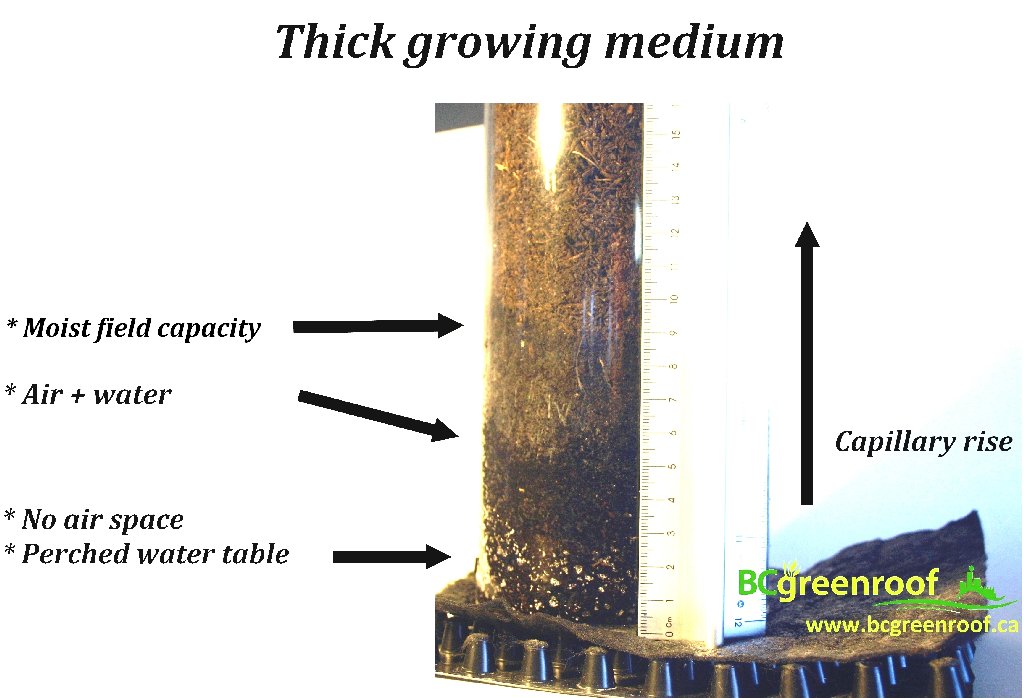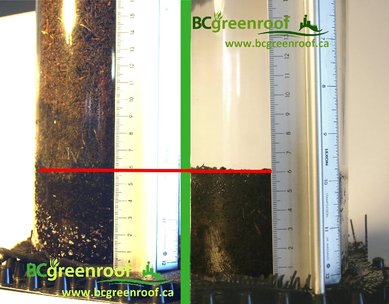Light Weight Green Roof (Shallow) Lush & Diverse or Mono-culture & Moss
Adapt to reach the desired outcome.
Objective of this article:
The experience we gained in more than 18 years of involvement in the Green Roof industry (National & International) and annually installing over 40.000m², gives us tremendous insight into the inner working, the details that matter and what to avoid when building Green Roofs..
Two of the topics we often receive questions about are:
· Can I build a Light Weight Green Roof (Shallow)?
· Could you perform an analytic inspection? Our Green Roof does not look the way it was or what we expected.
In a standard situation, would it be:
Adapt expectations / adapt construction based on knowing what to expect.
When considering a Green Roof two factors generally determine the way the build is influenced:
1. Expectations: there is a specific vision how a project would appear once it is done, and years later
- adjust building practice to the requirements to reach the end result; to reach the required potential, a Green Roof would need to be constructed … -?- can my structure accommodate this.
2. Site specific limitations: the building can only handle a specific load (added load reserved for Green Roof)
- adjust the construction of a Green Roof to meet these limitations.
In both situations, “it could be” that you consider a Light Weight (and most likely Shallow) Green Roof.
Over the years we received many questions as well as expressions of concerns regarding the “sometimes disappointing” outcome of a Shallow / light Green Roof. This article will address some aspects involved when considering a Shallow (Light Weight) Green Roof and how they may influence the overall appearance and performance of a Green Roof.
This article focuses on Shallow Green Roofs, where the thickness of the growing media generally is less than 2.5 inches (62 mm). These Green Roofs are light weight, due to their minimum thickness of growing media, however, there are less conventional options that could create a light weight Green roof, with a thicker layer of Growing media(≥3 inches = 75mm +)
We have been asked to perform inspections on several occasions where the building owner expected a lush flourishing Green Roof, as it was installed with a broad plant variety. However, over time ended up with only a few plant species left (mono culture) and lots of moss and open areas.
The information below explains why most of the Shallow Green Roofs end up with most often Moss formations, and decline in Sedum, and why someone opting for a Shallow Green Roof should adapt their end vision to this.
There are only a handful occasions where we observed exceptions to this.
Aspects that influence a shallow green roof:
· Ratio of available water and air/oxygen in growing media
Generally speaking plants need water, yet also air, and the ratio of available water and air determines if a plant survives drowns which inevitably influences the appearance of a Green Roof.
The German FLL guidelines specify a maximum water holding capacity of 65 Vol% with an air content of no less than 10 Vol% (resp. 25 Vol% at Pf. 1.8).
Plants need air/oxygen in their root system to diffuse Carbon Dioxide away from their roots to the growing media’s surface. This Carbon Dioxide is formed by the plant root cell’s respiration & microorganisms in the growing media. When no sufficient off-gassing is possible a plant will suffocate or drown.
Plants without sufficient off-gas potential result in plants that are week, exhibit slow development and are susceptible to environmental stress resulting in perishing plants.
The German FLL guidelines specify a maximum water holding capacity of 65 Vol% with an air content of no less than 10 Vol% (resp. 25 Vol% at Pf. 1.8).
Plants need air/oxygen in their root system to diffuse Carbon Dioxide away from their roots to the growing media’s surface. This Carbon Dioxide is formed by the plant root cell’s respiration & microorganisms in the growing media. When no sufficient off-gassing is possible a plant will suffocate or drown.
Plants without sufficient off-gas potential result in plants that are week, exhibit slow development and are susceptible to environmental stress resulting in perishing plants.
Fig 1 Fig 2.
· Particle size of growing media, pore space and capillary rise
Liquid water has a surface tension with a dimensional force caused by cohesion (hydrogen bonding) between water molecules. Within growing media, water is stored within its pore space by adhesion of water molecules to the side of the growing media's particles, when water is abundant (capillary water) - water tension (attraction) of water molecules is low (low capillary action). See Figure 3.
Adhesion = attraction of water molecules to molecules from another material
Cohesion = attraction of water molecules to other water molecules
Hygroscopic water = thin layer of water molecules surrounding a growing medium grain (particle)
Adhesion = attraction of water molecules to molecules from another material
Cohesion = attraction of water molecules to other water molecules
Hygroscopic water = thin layer of water molecules surrounding a growing medium grain (particle)
Fig 3.
Figure 4. When growing media dries out the water tension increases and water is held more tightly to the growing media grains (particles)
Fig 4.
Figure 5. Eventually when growing media dries out further, the capillary action disappears, leaving only a thin film of water surrounding the particles.
Fig 5.
Capillarity and capillarity rise is not limitless, and is proportional to the dimensions of pore space & surface tension and level of hydrogen bonding taking place between water molecules (cohesion). Generally fine soil particles like clay have fine pore space (higher cohesion) resulting in high negative pressure within the column of rise, causing suction. Course sand has large pore spaces - low cohesion resulting in a lower negative pressure in the column of rise - causing less negative pressure (suction) than clay, thus less capillary rise.
Fig. 6 Fig. 7
· Surface tension / surface energy of materials used in green roof growing media
The cohesive force of molecules is responsible for the so called surface tension, where each molecule within a mass pulls equally to neighboring molecules, causing a force equal to 0. Water molecules on the perimeter of a body of water (droplet) do not have the same molecules surrounding them as within a droplet, causing the outer molecules to pull inwards, causing some internal pressure that cause liquid to contact its surface to its minimum (thus forming an as spherical possible shape).
Surface tension/energy and hydrogen bonding differ between materials, causing adhesion and repelling.
Surface tension/energy and hydrogen bonding plays a role in Green Roofs as a drainage layer (plastic geotextile) has a different surface tension/energy and hydrogen bonding than water, and most often, water will form water droplets on top of the surface of geotextiles.
Gravitational force has to become greater than the surface tension/energy prior to draining through the fibers downwards, inevitably contributing to a perched water table.
Surface tension/energy and hydrogen bonding differ between materials, causing adhesion and repelling.
Surface tension/energy and hydrogen bonding plays a role in Green Roofs as a drainage layer (plastic geotextile) has a different surface tension/energy and hydrogen bonding than water, and most often, water will form water droplets on top of the surface of geotextiles.
Gravitational force has to become greater than the surface tension/energy prior to draining through the fibers downwards, inevitably contributing to a perched water table.
Figure 8 A+B. Water droplet on Geotextile filter fabric
(Note the surface tension that is not overcome by gravitational pull, contributing to a perched water table)
(Note the surface tension that is not overcome by gravitational pull, contributing to a perched water table)
· Perched water table in shallow Green roofs and their growing media
A perched water table is the formation of a body of water on top of a relatively impermeable layer forming a saturation/water log state.
A relatively impermeable layer could be caused by the lack of gravitational pull to overcome surface tension/energy from an underlying material. Surface tension/energy of water vs that of Geotextiles.
A perched water table could also be caused by a stronger negative pressure head within a growing medium, causing suction. The force of gravitational pull is lower than the negative pressure caused by capillarity.
The picture series below shows the spread of water within a demonstration set-up. Note the higher cohesion of molecules within the fine particles, causing suction – not releasing the water to underlying drain rock, only until full saturation and the gravitational pull overcomes cohesion (capillarity) within the fine particles.
A relatively impermeable layer could be caused by the lack of gravitational pull to overcome surface tension/energy from an underlying material. Surface tension/energy of water vs that of Geotextiles.
A perched water table could also be caused by a stronger negative pressure head within a growing medium, causing suction. The force of gravitational pull is lower than the negative pressure caused by capillarity.
The picture series below shows the spread of water within a demonstration set-up. Note the higher cohesion of molecules within the fine particles, causing suction – not releasing the water to underlying drain rock, only until full saturation and the gravitational pull overcomes cohesion (capillarity) within the fine particles.
Fig 9. Fig 10.
Fig 11.
Figure 12. Shows a shallow growing media representing a Shallow (Light Weight) Green Roof. Note the full saturation of the growing medium (dark coloration) as a result of a perched water table, causing no room for air/oxygen to reach plant roots, resulting in suffocation / perishing plants.
Figure 12. Shows a shallow growing media representing a Shallow (Light Weight) Green Roof. Note the full saturation of the growing medium (dark coloration) as a result of a perched water table, causing no room for air/oxygen to reach plant roots, resulting in suffocation / perishing plants.
Fig 12.
Figure 13. Shows the same growing media as in Figure 12, yet in a thicker (more heavy) application. Note that somewhat the same amount of saturation has formed on the lower part (perched water table), yet the thicker the media layer, the less saturation, resulting in more air within the mix of growing media.
Fig 13. Fig 14.
How does all this information influence a Green Roof?
Generally speaking Green Roofs with a shallow/thin layer of growing media are wet especially during the fall and winter season when there is almost a constant supply of water.
Given the relation between adhesion and cohesion, surface tension/energy and the formation of a perched water table, growing media is not able to drain out completely, to reach a natural occurring field capacity (maximum water holding capacity after gravitational drainage).
In contrast, a thicker layer of growing media demonstrates to reach a balanced field capacity. It will still form a perched water table and its associated water saturated/logged zone, yet, as thickness increases gravitational pull overcomes capillary rise by a negative head pressure and because of this, there will be less water in the top layer, compared to the bottom layer (see Fig. 12, Fig. 13 + Fig. 14)
As shown in Fig 13. there is a graduate transition from water saturated/logged zone to a dry zone on the top of the growing media, and by this, introducing air to plant roots, as the amount of water stored in the particles becomes less making space for air = increased off-gas potential.
In the end these factors influence the outcome of a Green Roof’s performance. In case a lush diverse Sedum mix is planted on a shallow layer of growing media, chances are higher that slowly plant material and plant diversity will diminish (Sedum) opening up space for most often Moss growth as Moss favors moist conditions.
In case a Green Roof containing Moss is desired, there is nothing wrong. If however, a more divers and lush Green Roof is desired with Sedum varieties, then a Green Roof with a shallow layer of growing media might not be the best option.
Does this mean a Sedum mix can’t be light weight?
No, there are options to allow for increased depth of growing media, while not sacrificing weight/ballast restrictions.
We thank you for your attention and reading this document, if you have any questions related to this document, or other questions regarding Green Roofs don’t hesitate to contact us.
Disclaimer: The tests conducted, the results and the text above have been performed by Kevin Kersten for BC Green Roof.
BC Green Roof is focused on awareness and training of individuals, organisations and institutions based on over 15 years of experience in the Green Roof industry of Europe.
All tests were performed to the highest standard of precision possible, by implementing digital monitoring equipment. Despite this, BC Green Roof and the author of this document excludes themselves from any liability. The reader of this document must satisfy him- or herself if the information is relevant to their situation. It is encouraged to verify any information prior to satisfying him- or herself. The sole purpose of this document and tests is to create awareness of the importance to look further than the information provided by manufacturers and suppliers in order to asses if a specific product is right for your application.
How does all this information influence a Green Roof?
Generally speaking Green Roofs with a shallow/thin layer of growing media are wet especially during the fall and winter season when there is almost a constant supply of water.
Given the relation between adhesion and cohesion, surface tension/energy and the formation of a perched water table, growing media is not able to drain out completely, to reach a natural occurring field capacity (maximum water holding capacity after gravitational drainage).
In contrast, a thicker layer of growing media demonstrates to reach a balanced field capacity. It will still form a perched water table and its associated water saturated/logged zone, yet, as thickness increases gravitational pull overcomes capillary rise by a negative head pressure and because of this, there will be less water in the top layer, compared to the bottom layer (see Fig. 12, Fig. 13 + Fig. 14)
As shown in Fig 13. there is a graduate transition from water saturated/logged zone to a dry zone on the top of the growing media, and by this, introducing air to plant roots, as the amount of water stored in the particles becomes less making space for air = increased off-gas potential.
In the end these factors influence the outcome of a Green Roof’s performance. In case a lush diverse Sedum mix is planted on a shallow layer of growing media, chances are higher that slowly plant material and plant diversity will diminish (Sedum) opening up space for most often Moss growth as Moss favors moist conditions.
In case a Green Roof containing Moss is desired, there is nothing wrong. If however, a more divers and lush Green Roof is desired with Sedum varieties, then a Green Roof with a shallow layer of growing media might not be the best option.
Does this mean a Sedum mix can’t be light weight?
No, there are options to allow for increased depth of growing media, while not sacrificing weight/ballast restrictions.
We thank you for your attention and reading this document, if you have any questions related to this document, or other questions regarding Green Roofs don’t hesitate to contact us.
Disclaimer: The tests conducted, the results and the text above have been performed by Kevin Kersten for BC Green Roof.
BC Green Roof is focused on awareness and training of individuals, organisations and institutions based on over 15 years of experience in the Green Roof industry of Europe.
All tests were performed to the highest standard of precision possible, by implementing digital monitoring equipment. Despite this, BC Green Roof and the author of this document excludes themselves from any liability. The reader of this document must satisfy him- or herself if the information is relevant to their situation. It is encouraged to verify any information prior to satisfying him- or herself. The sole purpose of this document and tests is to create awareness of the importance to look further than the information provided by manufacturers and suppliers in order to asses if a specific product is right for your application.

